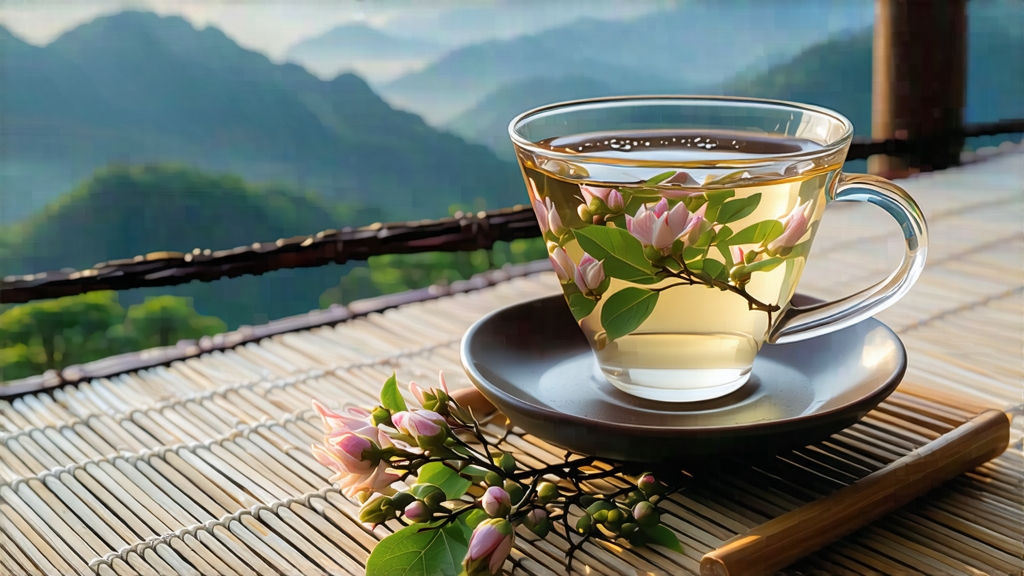
Bai Hao Yin Zhen—literally “White Hair Silver Needle”—is the most aristocratic member of the Chinese white-tea family. To the uninitiated it may look like a small pile of pale twigs, but in the eyes of growers, poets, and seasoned tasters these slim, down-covered buds are condensed spring moonlight, a quiet luxury that has been perfected over three centuries. This essay invites international readers to explore every layer of Silver Needle: its historical legends, micro-terroirs, hand-crafted production, brewing choreography, and the subtle language by which it speaks to the senses.
-
Historical whispers
White tea as a category first appears in Song-dynasty treatises, yet Yin Zhen’s rise to fame begins in the 1790s around Taimu Mountain, Fujian. Local chronicles tell of a tea-tax official named Xiao who, smitten by the fragrance of unopened buds drying on a bamboo mat, persuaded villagers to abandon rolling and pan-firing. The Qing court soon listed the tea among “gong cha” (tribute teas), and export records from Fuzhou’s 1880s tea hongs show Silver Needle bound for Southeast Asian pharmacies, prized for its “cooling” properties. In 1915 it won gold at the Panama-Pacific Exposition, securing a place among China’s “Three Famous White Teas” alongside Bai Mu Dan and Shou Mei. Today, European specialty cafés auction top-grade Needle for more than silver bullion by weight, a poetic return on its luminous name. -
Terroir: two birthplaces, two accents
Authentic Silver Needle is legally restricted to two Fujian counties—Fuding and Zhenghe—each lending a distinct accent to the tea.
Fuding, on the rugged coast, enjoys marine fogs that slow photosynthesis, creating buds rich in amino acids. The local Da Bai Hao cultivar (Big White Down) develops especially thick trichomes that refract light like frost. Liquor from Fuding tends toward creamy magnolia with a marine-sweet finish.
Zhenghe, inland and 200 m higher, possesses iron-rich lateritic soil and cooler nights. Its Zhenghe Da Bai bushes yield slightly slimmer buds whose lower polyphenol ratio translates into a softer, orchid-like aroma and a lingering dried-fig sweetness. Connoisseurs often parallel the two to Chablis versus Meursault: same grape, divergent geology.
-
Plucking etiquette: one bud, many rules
The harvest window opens in mid-March when the tea bush awakens, yet only on clear days after the morning dew has lifted. Pickers—usually women wearing bamboo hats to shield buds from breath moisture—snap the tender candle-shaped tip with a downward flick that leaves the mother leaf intact. A full kilogram of finished Silver Needle demands 30,000 buds, all of uniform length (2.5–3 cm) and pearl-white color. Experienced eyes reject any “purple bud” kissed by sudden cold, because anthocyanins would add an unwanted astringent note. -
Crafting without craft: the art of doing almost nothing
White tea’s philosophy is wu-wei—effortless action. Once plucked, the buds are spread on water-woven bamboo trays 1.5 cm thick and wheeled into a sun-drying yard. For the next 48–60 hours they enter a rhythmic cycle: sun for twenty minutes, shade for forty, repeated six to eight times a day. This controlled photothermic breathing allows enzymatic oxidation to hover between 5 % and 10 %, just enough to round edges while preserving fresh aromatics. When outdoor conditions falter, masters move trays into a low-temperature (28–32 °C) withering room scented only by fresh mountain pine; any stronger ambient odor would cling to the hygroscopic buds. Finally, the semi-dry needles are transferred to a charcoal-heated “wan hong” oven, yet the fire is so gentle (below 40 °C) that one can lay a hand on the bamboo sieve. Total moisture must fall to 5 % without ever crossing the caramelization threshold—no green tea’s kill-green, no black tea’s rolling. The result is a leaf architecture almost unchanged from the living state, explaining why Silver Needle ages so gracefully. -
Grading the moonlight
Chinese national standard GB/T 22291